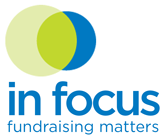Recent Posts
- The Secret Sauce: Strategies & Tactics to Engage Institutional Funders
- What Are Your Donors Saying When They Go Quiet? And How Should You Respond?
- Maximizing Year-End Giving: Strategies for a Successful Fundraising Campaign
- Navigating 2024’s Unique Year-End Fundraising Landscape
- Latest Giving USA Data
- How to Flex Your Case for Support to Raise More Money
- Maximizing Potential of Donor-Advised Funds: Strategies You Need To Know
- Major Donors: Cultivating Relationships & Forging Strong Ties
12 Tips to Ensure Your Year-End Appeal is Read
By: Joan Geiger-Wood, CFRE, Vice-President
November 1, 2019
Before you draft content and pull your list, be sure to answer a simple question: Why would someone want to donate to your organization?
You can answer that in many ways. What are you doing that’s exciting? How will your organization spend the money raised? Focus on answering that simple question and then make sure to follow these proven tactics to ensure mail and email appeal success.
Proven Tips for a Successful Year End Giving Campaign
ENVELOPE & SUBJECT LINE
Let’s get the letter or email opened. It doesn’t matter what the message says if no one opens the envelope. These can be done by a mailhouse or in the office (interns are great for mailings!)
- In an email, take time to think up a subject line that will get attention – short and clever is good; long and pleading isn’t.
- Put a teaser language on the outside of the envelope. Give me a hint about the great work you’re doing.
- NEVER ever, ever, ever use a label. You might as well put a note on the envelope that says, “I don’t really care if you open this or not.”
- Take the time to put a live stamp on the envelope – trust me it matters. The goal isn’t to get these letters or emails out the door; the goal is to get it read.
- Sign above the return address block on the envelope. Make it personal.
LETTER & EMAIL TEXT
Okay you’ve won half the battle and gotten them to open the envelope or email. Now let’s make sure that text is great.
- If you’re writing a letter or an email, you’re writing to ONE person. Don’t say “Thank you all for your support this year.” Rather say, “Joan, I can’t thank you enough for all you’ve done this year.”
- Letters MUST be hand-signed. I know it’s more work and slows down the train, but why bother sending a letter if you’re not going take the time to make it meaningful? There are tons of automation options, or you can simply print a blue ink (felt tip pen) signature, but at a minimum, hand sign your high dollar donor letters.
- Sign in blue ink. It’s been tested over and over again and it makes a difference. We want it to be noticed.
- Write a note. Use the donor’s name. Write it with a real pen in blue ink. Write the note on top of the front of the letter and fold it so it shows first – or insert a hand-written note card.
- When drafting your letter or email, imagine you’re writing to a real person. It helps to personalize the content. Maybe your mother? Make her excited to hear about what you’re doing and why your organization matters. If you can get her excited to give, then others might as well. (My mother was pretty tough so I pick her but you might want to find a better challenge.)
- Speaking of my mother… She would say, “Use the Queen’s English.” If you can’t master grammar, how will you help poor children, cure diabetes, or solve climate change? Folks will be distracted by bad grammar.
- Assume only 10% of your recipients will read every word so make sure it will read well. Expect that 10% will just skim your letter and read just the bold and underlined text. Don’t be offended; help them to still get your message from a quick skim.
Use bold, short sentences. Read just those. Does it still convey your message? Make your paragraphs short. They’re easier to read.
80% will only read your opening paragraph, and maybe the post-script on the letter. That’s all you’ll get. Make them good. Your entire message should be summed up there.
Brevity is your friend.

